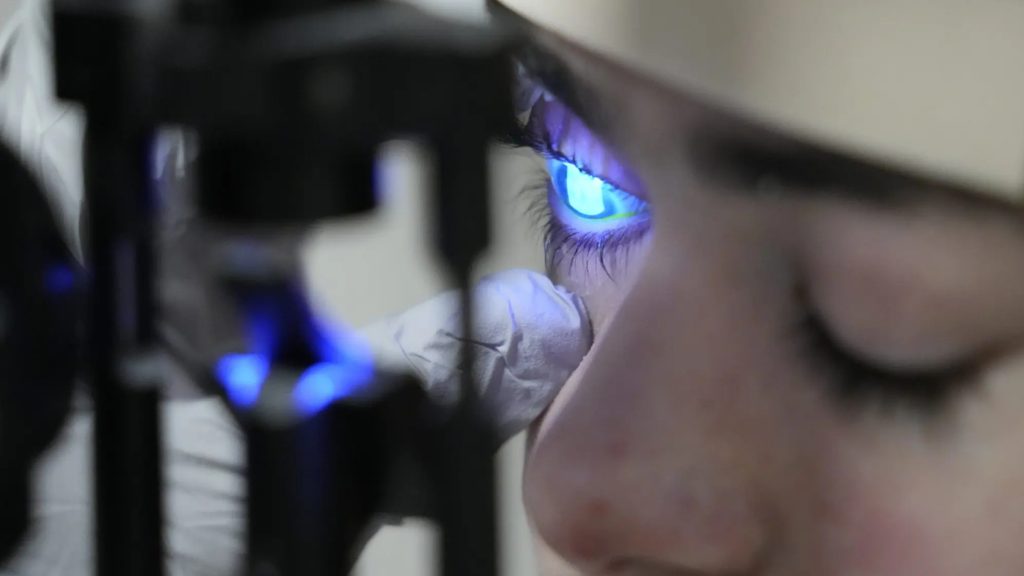
A groundbreaking gene therapy using eyedrops with an inactivated herpes virus has successfully restored the sight of a 14-year-old boy, who had been legally blind for most of his life due to corneal scars causing rare genetic condition.
- Dr. Sabater had the idea to adapt a topical gene therapy gel, successful for DEB skin lesions, into eye-friendly eyedrops for Antonio’s condition.
- After undergoing surgery on his right eye and starting the eyedrop treatment, Antonio’s vision improved significantly, and scarring did not reoccur.
Miami, FL – A groundbreaking gene therapy using eyedrops with an inactivated herpes virus has successfully restored the sight of a 14-year-old boy named Antonio Vento Carvajal, who had been legally blind for most of his life due to corneal scars causing rare genetic condition.
Dr. Alfonso Sabater, a renowned ophthalmologist at the University of Miami Health System’s Bascom Palmer Eye Institute, restored Antonio’s sight through the use of gene therapy eyedrops. Antonio, who has been legally blind for most of his life due to dystrophic epidermolysis bullosa (DEB), a rare genetic condition, can now see again after months of treatment.
DEB is a disease that causes blisters and severe wounds on both the skin and the eyes due to a faulty collagen-producing gene known as COL7A1. Antonio’s vision progressively worsened as corneal scars built up on his corneas, posing significant challenges to his daily life and mobility. Despite numerous surgeries, traditional approaches failed to offer a lasting solution.
The breakthrough came when Dr. Sabater, who had been successfully testing a topical gene therapy gel for DEB skin lesions, had an idea: Could this therapy be adapted to treat Antonio’s eyes as well? Encouraged by Antonio’s progress with the skin gel, Dr. Sabater approached Krystal Biotech, the manufacturer of the gene therapy, to explore the possibility of creating an eye-friendly version of the treatment.
Suma Krishnan, co-founder and president of research and development at Krystal Biotech, acknowledged the potential and collaborated with Dr. Sabater to develop the new formulation. The treatment, known as Vyjuvek, employs an inactivated herpes simplex virus as a viral vector to deliver functional copies of the COL7A1 gene to the patient’s corneas. The therapy’s approval for compassionate use from the US Food and Drug Administration, along with permissions from university and hospital review boards, allowed the treatment to commence.
After undergoing surgery on his right eye last August, Antonio began using the gene therapy eyedrops, and the results have been astounding. His vision steadily improved, and scarring did not reoccur. Recently, doctors measured the vision in Antonio’s right eye at an impressive 20/25. Dr. Sabater has now initiated treatment for Antonio’s left eye, which had even more scar tissue. The left eye’s vision is rapidly improving and has reached close to 20/50.
Commenting on the significance of the therapy, Dr. Aimee Payne, a dermatology professor at the University of Pennsylvania, praised the gene therapy’s ability to target the root cause of diseases effectively.
While the therapy holds immense promise, the price tag remains a significant concern. Gene therapies like Vyjuvek come with a high cost, making them inaccessible to many patients who might benefit from them. The annual cost of the treatment is approximately $631,000 per patient, making it crucial to address affordability and access issues.
The success of this gene therapy treatment has opened doors to potential breakthroughs in treating other eye diseases.
Inside Telecom provides you with an extensive list of content covering all aspects of the Tech industry. Keep an eye on our Medtech section to stay informed and updated with our daily articles.